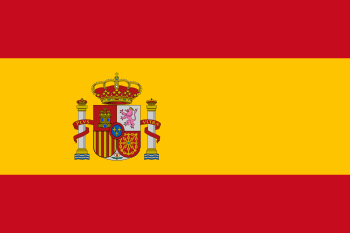Following our successful fund-raising lunches for La Palma our President recalled the article that he wrote for the Tenerife News in 2016 remembering the 45th Anniversary of the 1971 eruption. A very interesting read. This has been taken from the Tenerife News.
 One fact that most people don’t know about volcanic eruptions is that they are not short-lasting affairs like earthquakes. They go on for weeks. In the beginning, they throw in a series of earth tremors to announce their intentions. Take La Palma for instance. On Thursday, 21st October 1971, around noon, earth tremors were felt all over the island. These were particularly strong in the southern municipality of Fuencaliente. La Palma shook intermittently for the rest of the day causing such alarm amongst the inhabitants in the south that most of them spent the night alfresco. With nowhere to run, their main aim was to escape any falling masonry.
One fact that most people don’t know about volcanic eruptions is that they are not short-lasting affairs like earthquakes. They go on for weeks. In the beginning, they throw in a series of earth tremors to announce their intentions. Take La Palma for instance. On Thursday, 21st October 1971, around noon, earth tremors were felt all over the island. These were particularly strong in the southern municipality of Fuencaliente. La Palma shook intermittently for the rest of the day causing such alarm amongst the inhabitants in the south that most of them spent the night alfresco. With nowhere to run, their main aim was to escape any falling masonry.
The shaking shuddered on and off for a couple of days and the scientists were already postulating the creation of a new volcano. On the third day the tremor had been so violent that the church bells of Fuencaliente rang out loud and clear with no assistance from the bell ringers. It was noticeable that these tremors were getting stronger. By now, the Palmeros had swallowed their initial fright, returned to their homes and stoically awaited the outcome. They didn’t have long to wait. During the early hours of the fourth day hundreds of people in the Fuencaliente area were deposited on the bedroom floor during the greatest tremor yet, followed by another at 11am.
By remarkable coincidence, on the Day of Rest, Sunday 24th October, the tremors stopped and the worshippers and optimists thanked God that it was all over. But the island was simply obeying the laws of nature by delivering the calm before the storm.
Two days later, after a tremor lasting 16 seconds, a vent exploded at the southern end of the Cumbre Vieja range. It was quickly followed by another crater-forming explosion. First came the smoke, fire and burning rocks tossed into the air and then the molten lava flowing slowly down towards the sea.
Due to the friendly warning, precautions had been taken; the village of Los Quemados which was nearest to the point of the eruption had been evacuated and all the schools in the municipality were closed until the situation could be assessed
Fortunately, the lava flow avoided populated areas and roads, but it destroyed many vines as it worked its way down. In fact, the vines which escaped the lava were killed off by the heat and the ashes which settled over the whole area. As one report stated – “1971 would be a bad year”. The flow had passed over the malpais, the bad land (lit.) or wasteland. The volcano formed by the eruption was named Teneguia (a Guanche word) after a large rock standing close by.
Apart from the compulsory evacuation from Los Quemados, more locals had moved into the capital, Santa Cruz, but the majority of the population became calm, now that they knew that they were not in direct line of fire.
The intensity of the eruption grew as a third vent opened spewing out more lava and molten rocks. The display was spectacular.
By now not only the locals but trippers were coming in their droves from the two major islands Tenerife and Gran Canaria. The airport could only take propeller planes and thousands of visitors came by ship. The new volcano, Teneguia did not disappoint the sightseers. Over the next three weeks of the eruption there were moments when panic set in as an almighty underground explosion emanated out of the craters. A few daredevils got too close to the main event and suffered from the inhalation of the fumes but the Red Cross were on hand to save their lives. As they were being resuscitated, the miscreants faced another shock – a fine for disobeying police orders to stand well clear of the craters and the flowing lava. Despite all this there was generally an atmosphere of wonderment. Eye witnesses described the sound as being like the roar of a dragon trapped under-ground.
The eruption lasted for 33 days, terminating on 28th November, which was also a Sunday and the worshippers not only gave thanks again, but prayed for the soul of an elderly fisherman who died through getting too close to the lava flow and was asphyxiated by the fumes. His was the only fatality.
In this short time a cone had been formed on the Teneguia measuring 439 metres. In addition land had been reclaimed from the sea amounting to 29 hectares (72 acres)
Of course, most of the Palmeros had witnessed an earlier eruption when, in 1949, an existing vent in the northern edge of the Cumbre Vieja burst into life.
This eruption lasted for 37 days from 24th June to 30th July and, unlike the later eruption, was not measured or documented and was possibly unexpected. There was an eye-witness, though, to the initial ghostly rumblings when high on a hill sat a lonely goatherd (I can’t resist it) and he didn’t sit there for long when he saw rocks and burning material being thrown out of the vent. In a state of panic he hurtled down the mountain side shouting out a warning to all and sundry. This eruption finished in the sea, the lava having also passed through wasteland. No loss of life was reported.
We can’t leave La Palma and its Volcanic History without talking about a time when Fuencaliente was not so lucky with a lava flow. The name, Fuencaliente, translated into English is Hot Spring. In the 16th and 17th centuries there were galleons by the score anchored off the coast waiting for their rich owners and friends to sample the wonder cure-all of the hot volcanic water that emerged from the base of a lava flow on the outskirts of the town. Not only were sufferers treated on the spot for leprosy, syphilis and other unmentionable skin diseases but thousands of barrels of water from the Fuente Santa were sent around the world, making this tiny part of one of the smallest islands in the archipelago the richest per capita in the whole of the Spa-nish territory.
Unfortunately, in 1677, an eruption occurred and the resulting lava flow covered the outlet completely and the ships sailed away never to return. The party was over.
Ken Fisher.

 Please see
Please see